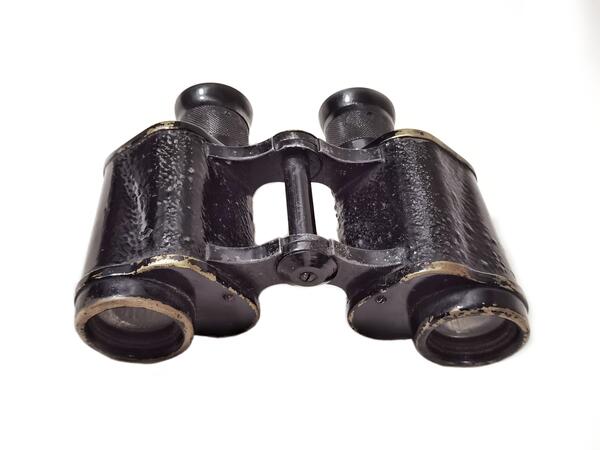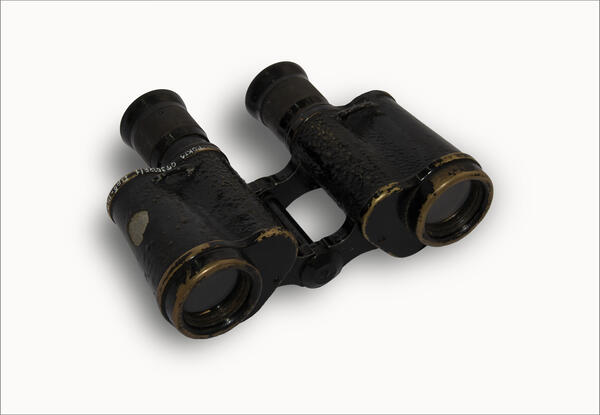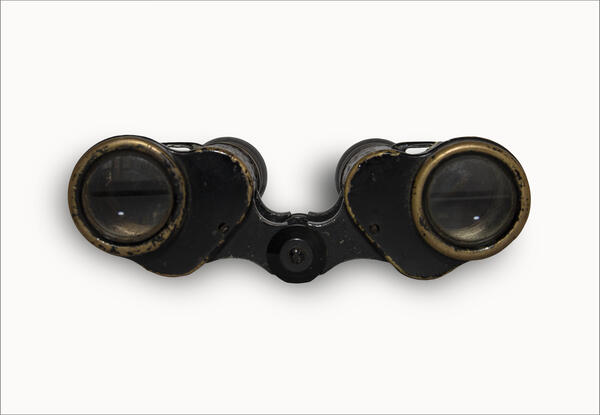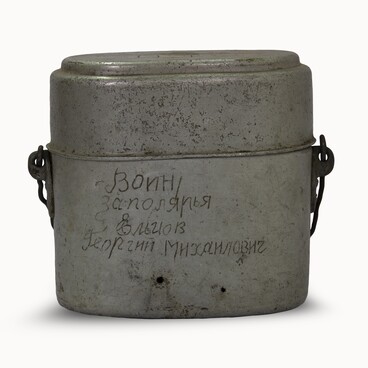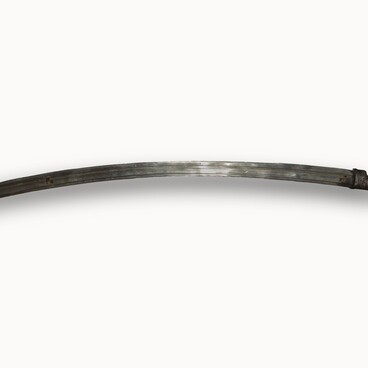Soviet army binoculars were designed to observe objects, measure horizontal and vertical angles, and determine the distance to objects provided their dimensions were known. The binoculars were provided with a graticule, which required additional sharpness adjustment; each of the eyepieces was therefore focused independently.
In the B-6, independent focusing also made it possible to achieve better sealing of the case, which was made of an aluminum-magnesium alloy. The body had high mechanical strength. The B-6 was a portable binocular observation instrument that was mostly intended for visual search for, observation, and examination of objects. The specimen on display was developed in the Soviet Union in 1939.
In the late 1920s, the industrialization of the country began, its main goal being to enhance the Red Army forces. In addition to increasing the number of weapons, their latest types were to be delivered to the troops in sufficient amounts. As of the beginning of 1934, the Red Army had 107 thousand binoculars; by 1941, the figure increased to approximately 450 thousand. More than half of all the binoculars were those of the B-6 model.
By the early 1940s, the Red Army had a fairly large range of binoculars in service. They had almost identical technical characteristics. Some of them were intended for use with a 6×30 gas mask.
According to the areas of application for the troops, binoculars can be divided into marine 8×40 binoculars, which were intended primarily for air defense units, and general-purpose 6×30 and 8×30 binoculars used throughout the army units. In addition to Soviet-made binoculars, optical instruments were officially used that were left after a series of armed conflicts on the territory of the former Russian Empire.
In wartime conditions, ways were sought to simplify the manufacturing technology and save scarce materials. It was decided to revive the idea of using a production line for assembling binoculars, which made it possible to halve the time required for the operation. During the war, Kazan Optical and Mechanical Plant No. 237 became the primary manufacturer of the B-6 binoculars.
In the B-6, independent focusing also made it possible to achieve better sealing of the case, which was made of an aluminum-magnesium alloy. The body had high mechanical strength. The B-6 was a portable binocular observation instrument that was mostly intended for visual search for, observation, and examination of objects. The specimen on display was developed in the Soviet Union in 1939.
In the late 1920s, the industrialization of the country began, its main goal being to enhance the Red Army forces. In addition to increasing the number of weapons, their latest types were to be delivered to the troops in sufficient amounts. As of the beginning of 1934, the Red Army had 107 thousand binoculars; by 1941, the figure increased to approximately 450 thousand. More than half of all the binoculars were those of the B-6 model.
By the early 1940s, the Red Army had a fairly large range of binoculars in service. They had almost identical technical characteristics. Some of them were intended for use with a 6×30 gas mask.
According to the areas of application for the troops, binoculars can be divided into marine 8×40 binoculars, which were intended primarily for air defense units, and general-purpose 6×30 and 8×30 binoculars used throughout the army units. In addition to Soviet-made binoculars, optical instruments were officially used that were left after a series of armed conflicts on the territory of the former Russian Empire.
In wartime conditions, ways were sought to simplify the manufacturing technology and save scarce materials. It was decided to revive the idea of using a production line for assembling binoculars, which made it possible to halve the time required for the operation. During the war, Kazan Optical and Mechanical Plant No. 237 became the primary manufacturer of the B-6 binoculars.

